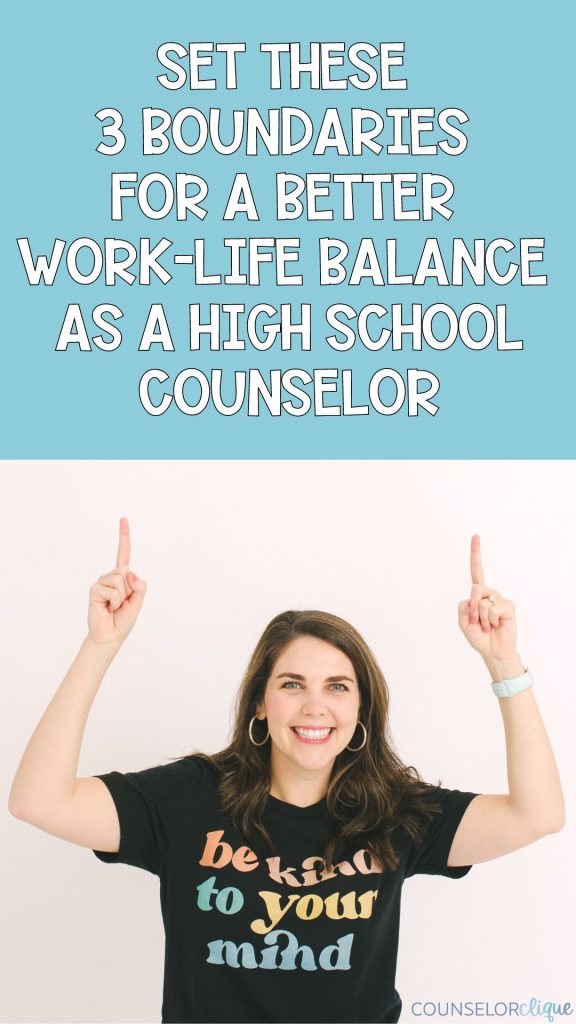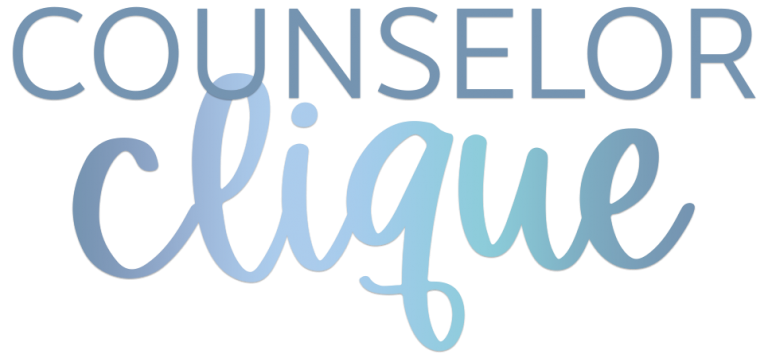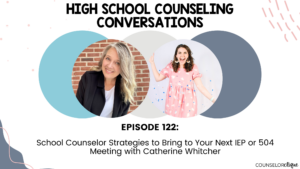We all know that life as a high school counselor means wearing many hats, juggling multiple tasks simultaneously, and all the while advocating the what and why of your job responsibilities to different stakeholders. With so much on your plate, burnout is a real threat that you have to actively fight against. Setting boundaries that help you maintain a positive work-life balance is critical to success. Your love for students will inevitably tempt you to ignore all the physical, emotional, and mental cues that you’re doing too much. As your #1 counselor hype girl, I’m here to tell you that work-life balance matters, for both you and your students.
Read on if you’re ready to kick your mental taskmasters to the curb and put some preventative measures in place for a healthy work-life balance. Plus, be sure to check out my TpT store for tons of high school counseling resources that do the gritty work for you, so you can get back to doing what you love: caring for and advocating for your students.

Work-Life Balance Boundary #1: Take your email off your phone
If you just read this and laughed out loud or rolled your eyes at what feels like an “extreme” work-life balance suggestion, hear me out. While some of you cannot imagine a world not tied to your email at all hours of the day, I’m inviting you to at least give it a try. It’s incredibly freeing. Taking your email off your phone helps keep your work within work hours (what a concept, right?). This sets boundaries with students, parents, and staff members. Trust me when I say, you don’t want to give the impression that you’re available at any hour, evenings, and weekends.
Looking at emails outside of working hours has one of two work-life balance-crushing effects. A) Your email will draw you into action meaning you’re now working outside of contracted hours. Or B) Your anxiety will spike as you dread what awaits you in your inbox for the next day. Dare I say, ignorance is bliss?
If your mind is spinning with push-back scenarios like “what if families can’t get the information they need?” or “what if a student needs my help with an upcoming deadline?” – be sure to check out my blog post on 5 Myths You’re Believing About Work Email.
Work-Life Balance Boundary #2: Don’t text about work outside of work hours
This boundary might feel tougher because it seems a little more personal than the email boundary. Not texting about work outside of work hours takes practice and discipline. But I promise it is possible, and it is worth it.
If you have an iPhone, consider turning on READ receipts. This gives the sender a little indication that you haven’t read their message. Pro Tip: If you have an Apple watch, you’ll be able to see the whole text come in, but it won’t change to read on your phone. This little act of self-discipline allows you to respond to messages when you have the time and bandwidth to thoughtfully and helpfully respond.
Another option is to create some sample scripts when people text you outside of working hours such as “Thanks, Mrs. Hall! Would you mind sending me an email with that information? I’ll get back to you Monday about it!” or “Thanks, Madeline! Shoot me an email with this. I don’t want to forget about it and I’m afraid it will get lost in my text messages.” This also gives a friendly reminder to your connections that email is the best way of contact and work-life balance matters to you (and it should matter to them, too).
Work-Life Balance Boundary #3: Stick to your contracted hours
I have found the best method of accountability for keeping work within contracted hours is leaving my work computer at school. Just remove the temptation altogether to check email or answer those mental taskmasters reminding you of your never-ending to-do list. I understand that there may be certain seasons where this isn’t possible (aka writing 378 letters of recommendation or scholarship letters), BUT don’t let the whole school year be your “season.”
Additionally, set clear expectations with your team members at the beginning of the year (some of my readers’ favorite beginning-of-the-year planning resources, here and here). There will inevitably be events in the mornings or evenings that you’ll be invited to attend. Divide and conquer with your team members and communicate reasonable expectations for attendance outside of designated working hours.
You can, in fact, set clear boundaries about work-life balance and be a team player. So don’t believe the lie that you are lazy or a slacker if you’re not buying into American workaholism. If you start implementing these habits, you can make big strides in your job satisfaction by making time to rest and recharge outside of work.
High school counseling can be downright exhausting. If you’re needing a boost in the self-care realm, be sure to check out my other self-care resources, including this podcast on creating an intentional work-life balance. Taking care of yourself means more availability for your students. Take the time to consider your mental and emotional health; your students are depending on it!






